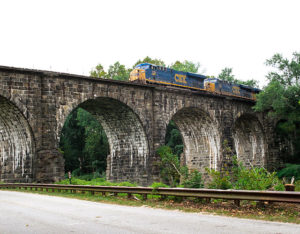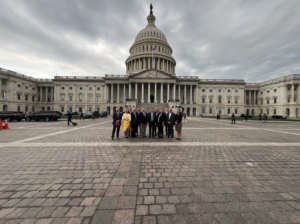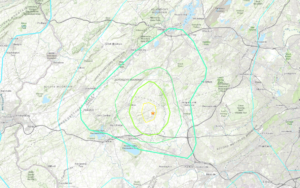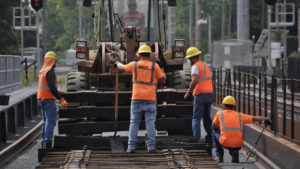Cell phone service expands to 20 DC Metro’s underground stations
Written by jroodExpanded cell phone service is now available in 20 of Metro's busiest underground stations. As of 5:30 a.m. October 16, Metrorail riders are able to use three major cell phone providers in addition to the existing Verizon Wireless service to make calls from 20 station platforms. Eventually, AT&T, Sprint and T-Mobile services will be available from anywhere inside the stations.
"It’s important for
Metro customers to realize that, initially, expanded cell phone service is only
from the platforms of 20 of our busiest underground stations," said Metro
General Manager John Catoe. "Customers should expect to see continual
improvement in their cell phone coverage and call quality as additional
enhancements to the wireless network are made."
"This will really help
people communicate. I am glad we are at this point," said Metro Board Chairman
Jim Graham.
AT&T, Sprint,
T-Mobile and Verizon Wireless have installed hardware at no cost to Metro that
will allow Metrorail customers to make calls, send text messages or surf the
Web from inside the following 20 stations: Ballston, Bethesda, Columbia
Heights, Crystal City, Dupont Circle, Farragut North, Farragut West, Federal
Triangle, Foggy Bottom-GWU, Friendship Heights, Gallery Pl-Chinatown, Judiciary
Square, L’Enfant Plaza, McPherson Square, Metro Center, Pentagon, Pentagon
City, Rosslyn, Smithsonian and Union Station.
During the next few
weeks, the team of cell phone providers will continue to enhance the wireless
network at these stations to provide callers with continuous coverage from the
street into each station. Customers also will have broadband data network access.
"In little more than two
months, representatives from AT&T, Sprint, T-Mobile and Verizon Wireless
have worked around the clock with Metro employees to bring wireless service to
Metro’s top 20 underground stations," said Suzanne Peck, Metro’s Chief Information
Officer. "We are proud of their cooperation under such a tight deadline, and we
look forward to continuing our partnership, which will bring wireless service
to the remaining 27 underground stations and to the entire Metrorail system by
October 2012."
As part of the new wireless
network installation, large cabinets that house cellular electronics have been
installed in stations in areas that do not impede the flow of customers or
impact the safe operation of the Metrorail system. New cables and antennae also
were installed late at night when the Metrorail system was closed.
Previously, Metro riders
could only receive cell phone service from multiple providers at aboveground
stations. Until now, the underground wireless network only supported Verizon
customers and Sprint phones that roamed onto the Verizon network. In 1993,
Metro agreed to allow Bell Atlantic Mobile Systems, which later became Verizon
Wireless, to build and maintain the first wireless network. In exchange,
Verizon built a public safety radio communications system for Metro and paid
annual fees to Metro. Verizon has offered wireless service in the Metrorail
system since 1994.
AT&T, Sprint, T-Mobile
and Verizon Wireless are responsible for owning, operating and maintaining the
new wireless network. The firms also will build a second wireless network,
which Metro will own, operate and maintain for Metro’s own public safety and operational
communications. The second network will support future plans to launch The
Metro Channel, which will provide riders with rail and bus service information,
news and advertising via video monitors in stations, trains and buses.
The wireless contract is
expected to generate approximately $25 million for Metro during the initial
15-year contract and an additional $27 million during the five, two-year
renewal terms. Other FCC licensed and unlicensed carriers may gain access to
the networks either through entering into agreements with Metro or the group of
carriers, which would produce additional revenue for the transit agency.





